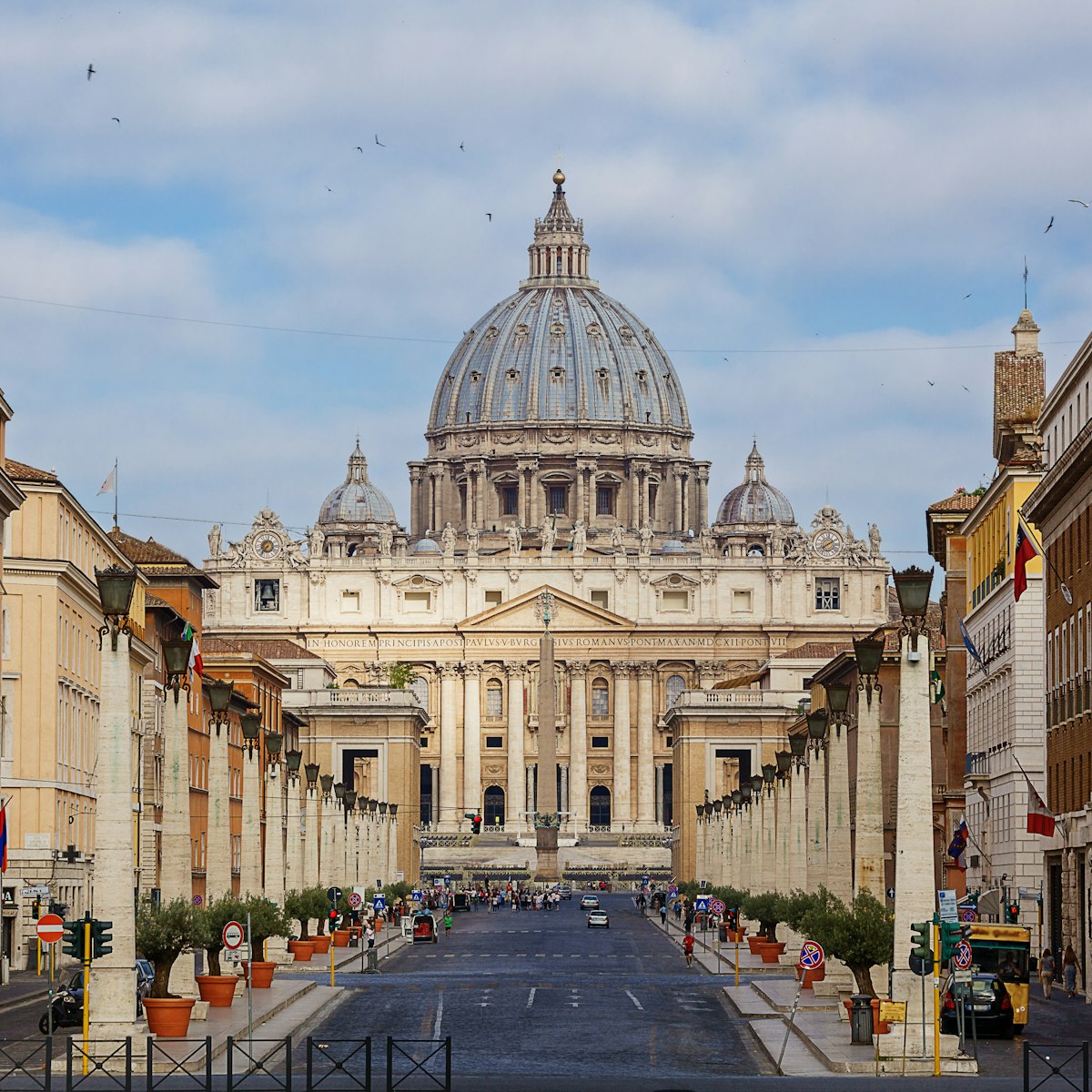Dating from 1471, the Capitoline Museums are the world's oldest public museums. Their collection of classical sculpture is one of Italy's finest, boasting works such as the iconic Lupa Capitolina (Capitoline Wolf), a life-size bronze of a she-wolf suckling Romulus and Remus, and the Galata morente (Dying Gaul), a moving depiction of a dying warrior. There's also a formidable gallery with masterpieces by the likes of Titian, Tintoretto, Rubens and Caravaggio.
History
Located on top of the Campidoglio, one of the seven hills on which Rome was founded, the Capitoline Museums were established in 1471, after Pope Sixtus IV donated a set of precious bronzes to the city.
The Pope’s original collection of sculptures formed the first nucleus of the museum’s exhibits, which would continue to grow over the course of centuries through new acquisitions. The 15th and 16th centuries were especially fruitful – archaeological excavations led to the discoveries of ancient treasures such as the Colossal Head of Constantine, dating back to the 4th century CE, and the Hercules of the Forum Boarium, a gilded bronze Hellenistic statue believed to date back to the 2nd century BCE, became central pieces of the museum’s collection.
During the 16th century the square housing the Palazzo dei Conservatori, the Capitoline Museum’s main building, experienced a major overhaul. In charge of the redevelopment project was none other than Florentine Michelangelo Buonarroti, who designed the iconic elliptical piazza in 1538.
The Capitoline Museums opened to the public in 1734, offering exceptional insight into centuries of art collection practices, capturing evolving styles and tastes of rulers, popes and artists.
Visiting the museum
The museums' entrance is in Palazzo dei Conservatori, on the right as you come up the Cordonata staircase. Here you'll find the original core of the sculptural collection on the 1st floor and the Pinacoteca (picture gallery) on the 2nd floor.
Before you head upstairs, take a moment to admire the ancient masonry littered around the ground-floor courtyard, most notably a mammoth head, hand and foot. These all come from a 12m-high (39ft) statue of Constantine that originally stood in the Basilica di Massenzio in the Roman Forum.
Of the sculpture on the 1st floor, the Etruscan Lupa Capitolina is the most famous. Donated to the Roman people by Pope Sixtus IV, the bronze wolf stands over her suckling wards, who were added in 1471. Until recently, the she-wolf was thought to be a 5th-century BCE Etruscan work but carbon-dating has since shown it probably dates from the 1200s.
Other highlights include the Spinario, a delicate 1st-century-BC bronze of a boy removing a thorn from his foot, and two works by Gian Lorenzo Bernini: Medusa, and a statue of Pope Urban VIII in the frescoed Sala degli Orazi e Curiazi. Also on this floor, in the modern Esedra di Marco Aurelio, is the original of the equestrian statue of Marcus Aurelius that stands outside in Piazza del Campidoglio.
Upstairs you'll find the museums' picture collection, mainly Italian works from the 16th and 17th centuries. Each room harbors masterpieces, but two stand out: the Sala Pietro da Cortona, home to Pietro da Cortona's Ratto delle Sabine (Rape of the Sabine Women), and the Sala Santa Petronella, named after Guercino's huge Seppellimento di Santa Petronilla (The Burial of St Petronilla). This airy hall also boasts two important canvases by Caravaggio: La Buona Ventura (The Fortune Teller; 1595), which shows a gypsy pretending to read a young man's hand but actually stealing his ring; and San Giovanni Battista (St John the Baptist; 1602), an unusual nude depiction of the youthful saint with a ram.
A tunnel links Palazzo dei Conservatori to Palazzo Nuovo on the other side of the square via the Tabularium, ancient Rome's central archive, beneath Palazzo Senatorio.
Palazzo Nuovo contains some real showstoppers. Chief among them is the Galata morente, a Roman copy of a 3rd-century-BCE Greek original that touchingly depicts the anguish of a dying Gaul warrior. Another superb figurative piece is the Venere Capitolina (Capitoline Venus), a sensual yet demure portrayal of the nude goddess.
Tips and other practicalities
Piazza del Campidoglio is easily reached on foot from both the Colosseum and Piazza Venezia. The museum is open daily from 9:30am to 7:30pm. Tickets (€11.50) can be purchased online via museicapitolini.org or at the ticket office by the entrance, at Palazzo dei Conservatori. Ticket prices increase when there's a temporary exhibition on.









